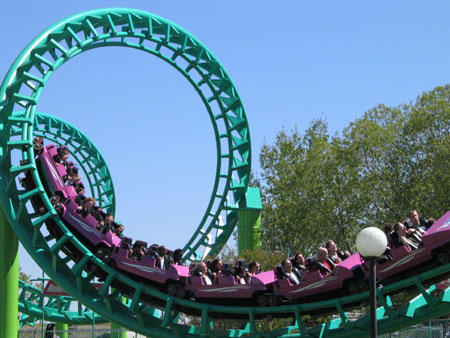
The Department of Physics and Astronomy will hold its ninth outreach event called Rollercoasterology

The Department of Physics and Astronomy will hold its ninth outreach event called Rollercoasterology
What could be better for junior and high school students than when your classroom transforms into an amusement park for a day? That’s just what’s happening on Friday for more than 2,000 students from across Alberta who are heading to Calaway Park to enjoy a few rides and learn a lot about physics.
On Friday, the Department of Physics and Astronomy will hold its ninth annual outreach event called Rollercoasterology — a partnership with Calaway Park, just west of Calgary, aimed at helping science teachers get their students excited about physics.
The students go on the rides and study the math, forces, and physics of the amusement park rides with the help of the Rollercoasterology workbooks, written by Phil Langill, a senior instructor in the Physics and Astronomy Department.
“The best way to learn how amusement park rides work is to get on them, measure them, and experience them. Equations on a whiteboard are meant to describe the real world, but they are boring. Feel your body getting twice as heavy, just as the equations predict, and now the equations connect to the real world. And you can't make that connection in the classroom.”
Langill and a dedicated crew of university volunteers will help guide the students through the workbook exercises, and take part in a few rides themselves. The junior high workbook covers the concepts of simple machines, forces, and geometry, and the senior high workbook explores Newton's laws, acceleration, and energy. The workbooks analyze various rides at Calaway Park ride, including Vortex, Ocean Motion, Dream Machine, Free Fallin', and Cosmic Spin.
The workbooks are a work in progress, so Langill will also be collecting data with an accelerometer from the park’s newest ride, Timber Falls. The four-minute log ride has three high-velocity drops and a zig zag river. “I want to add this ride to next year’s workbooks, to give those participants a new challenge,” adds Langill.
“Calaway Park has the tools, I have crafted the workbooks, and science teachers are always looking for ways that their students can experience science — it's the perfect science trifecta,” says Langill. “The students have a ball on the rides, and then they make simple measurements and use the workbooks to figure out the physics that makes the machines actually work. It's really become a great day of science learning.”